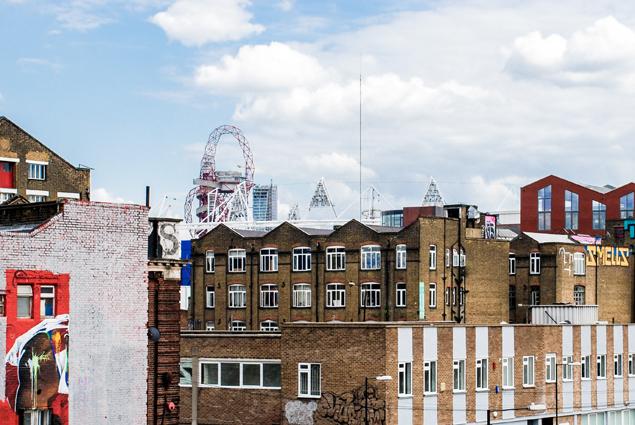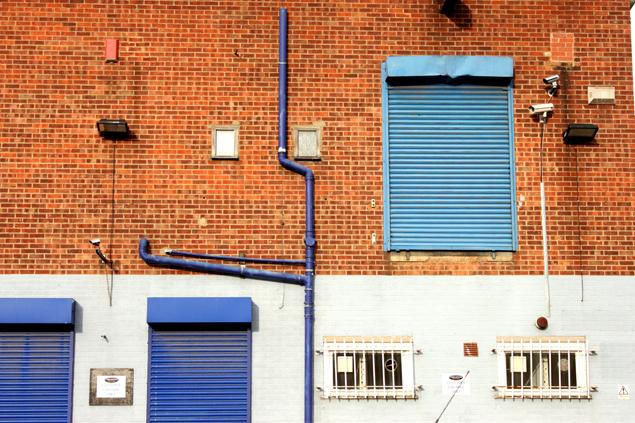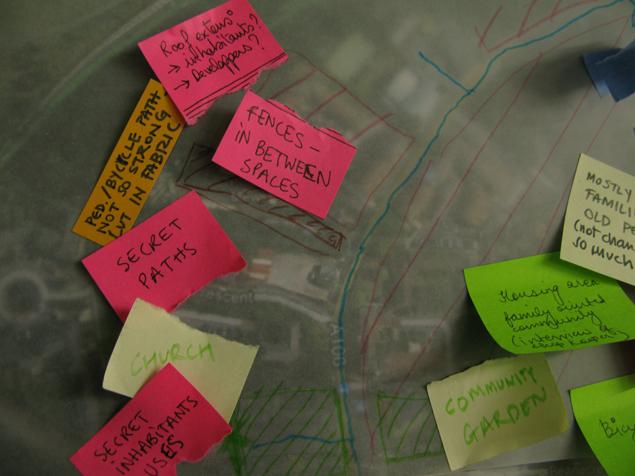Hackney Wick - From Fringe to Centre (Part 2)

I have taken the opportunity to revisit Hackney Wick after the Olympic Games (read about my previous ventures in the area in part 1 of this blog), through tutoring the Urban Transcripts workshop. The interdisciplinary workshop under the umbrella topic London the (n)ever Changing City was alluding to the nature of London as a juxtaposition of the old and new, and came very timely as the public eye shifted from the success of Team GB to the legacy of the Games.In collaboration with my guest tutor Joanne Pouzenc we decided to focus on Hackney Wick and its transformation From Fringe to Centre. We wanted to investigate whether it is possible to integrate the unique and until now relatively protected existing community with a completely new part of the city with a fundamentally different character, without losing some of the diversity and richness that Hackney Wick has developed in the last decade.
In contrast to initiatives opposing the Olympic transformation, our aim was to develop urban and human strategies for Hackney Wick based on embracing the change, yet creating a silo to preserve the special nature of the place. Our students were a mix of Hackney Wick residents and outsiders, bringing both local knowledge and fresh perspective into the discussion. We have asked ourselves whether public always means open, whether inclusive always means common, whether private always means closed. Putting these notions in juxtaposition, we developed soft strategies for the locals to understand and control the wave of changes, embracing the window of opportunity between now (just after the Olympics) and the opening of the Olympic Park in summer 2013.

After a walk around the site, the notion of physical limits and borders became a strong element for the students to work with, as we observed a multiplicity of fences and gates across Hackney Wick. For a visitor, this landscape of confusion created borders. For a local resident in the know, they were the key to secret uses such as galleries, skate parks, studios and clubs. We have identified this unique psychogeography of Hackney Wick – created through storytelling between local inhabitants and transpiring beyond Hackney Wick through communities of interest – as an advantage and an asset through which to develop a set of filters to protect yet open up Hackney Wick to the outsiders.
As opposed to transforming areas that advertise themselves by drawing an exact map of all services and amenities creating in effect an attraction park aimed at passive users, our proposal played on the notion of raising curiosity and thus enabling different levels of experiencing Hackney Wick to different users. By manipulating the landscape of confusion, we created layers of accessibility, depending on the curiosity of the visitor. Someone merely passing through may not notice the hints and so his route will remain limited to the main connective corridor, which will become the place embracing a typical main street character found across London. But for an observant and curious passer-by, some of the hints will open up doors to new experiences. This way the informal nature of the existing uses becomes protected, yet open. At the same time aggressive development will be channelled along specific main routes, leaving other areas open for more alternative development models such as co-housing schemes and live-work units.

An intensive gathering over several days can be read as one moment in time along the continuous process of city development, shared by a group of people. In this moment there is a chance to stimulate imagination, raise curiosity and explore. We take part in the process for a limited time, but what was before and what will be is linked so we have the power to influence the direction in which things will evolve by creating a positive stimulus and a momentum. The value of site-specific learning experience is that we encourage students to come up with original ideas responding directly to the context in which they are immersed. We can get inspiration from all over the world, but there is no excitement in taking existing models and overlaying them one to one onto another situation without any creative input. The failure of cities trying to replicate projects such as Guggenheim in Bilbao or High Line in New York is that they ignore the context in which these projects are embedded. By ignoring the vital components that make these projects successful such as connectivity (investment into infrastructure and services in case of Guggenheim) and genius loci (capturing views of Manhattan skyscrapers in case of High Line), this “transplantation” can only fail.
With any Olympic Games, the criticism can be made that there is a certain lack of consideration for context, due to the programme, size and timescale of the development, resulting in a number of issues once the event is over – from white elephants and under occupied neighbourhoods to huge public debt. Balancing global and local interests in Olympic cities is a fine line and it is yet to be seen, whether London will live up to its legacy promise. But it is an opportunity for London to test its flexibility and ability in order to develop new mechanisms capable of successfully combining bottom up and top down development process. Who and what will determine London 2012 future is not beyond our influence. The process of negotiating our right to the city is happening on daily basis, whether in Hackney Wick or in Stratford. During the summer of 2012, it was the people who seized the moment in time to express their personality and their identity in an unprecedented way, and it was the people who captured imagination of millions across the world. In Hackney Wick, people create stories within the scenography of the buildings they occupy every day. Now is the opportunity for them to present these stories to organisations such as London Legacy Development Corporation, in order to continue shaping the neighbourhood they co-created.
The Urban Transcripts workshop took place in Hackney Wick, London between 3-7 December 2012. Tutors Petra Marko (Havelska) and Joanne Pouzenc supervised Unit 3: Hackney Wick – From Fringe to Centre. Urban and Social Integration Following the London 2012 Olympics Unit 3 participants: Anna Aubry (Foxtrot Collecitve), Michela Leoni, Gauri Avasak Yennawar, Matthieu Becker (Foxtrot Collective).
The article was prepared for the publication Boj o prostor / Architektura jako společenská praxe (Contesting Space / Architecture as a Social Practice) - editors Markéta Březovská and Jan Kristek. Expected publishing date: autumn 2013 (Archa Zlín).
